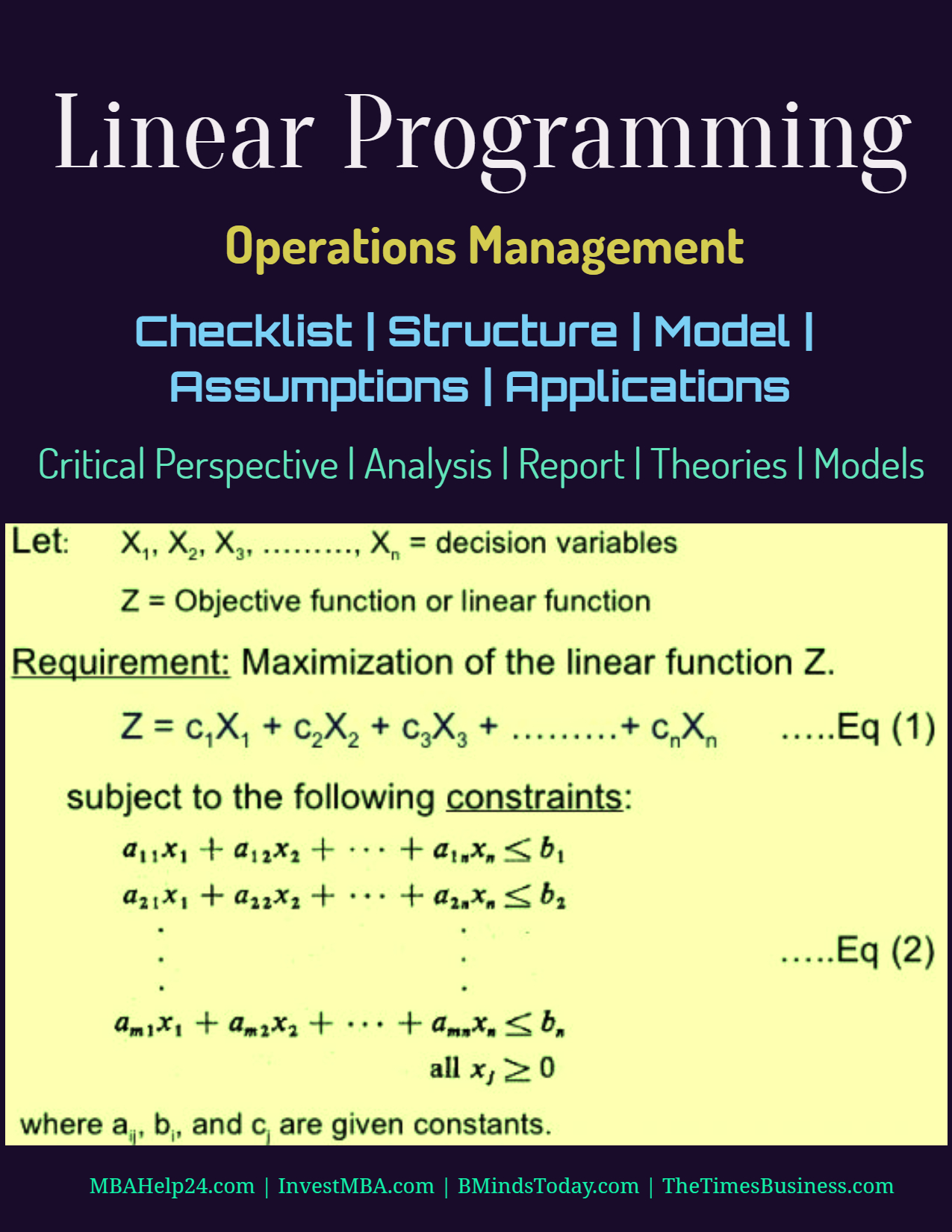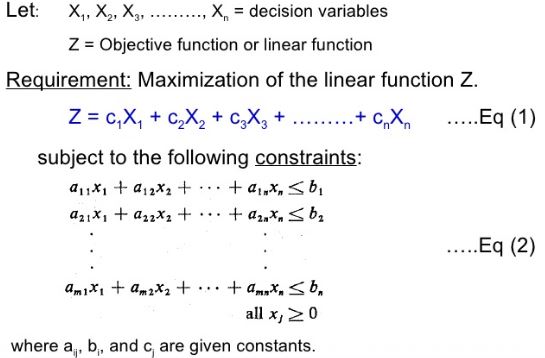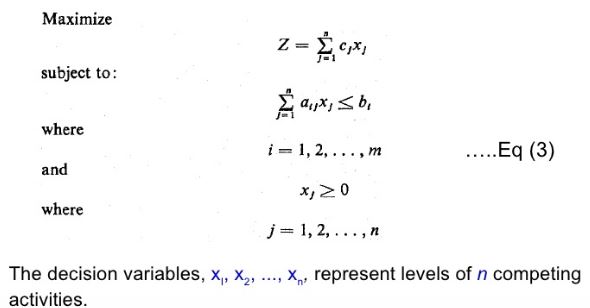Linear Programming | Checklist | Structure | Model | Assumptions | Applications
You Should Remember
Linear programming is concerned with the optimization (minimization or maximization) of a linear function while satisfying a set of linear equality and/or inequality constraints.
To be more precise, linear programming is a quantitative analysis technique that often uses to optimize an objective function assumed a set of constraints or limitations.

Linear Programming is the method of minimizing a linear objective function subject to a limited quantity of linear equality and inequality constraints.
In other words, linear programming is concerned with the optimization (minimization or maximization) of a linear function while satisfying a set of linear equality and/or inequality constraints.
To be more precise, linear programming is a quantitative analysis technique that often uses to optimize an objective function assumed a set of constraints or limitations.
As the term suggests, the functions are required to be linear in order for linear programming methods to be implemented.
Checklist that contributes to formulate a problem statement
The adequate yet appropriate information is pulled out from the problem statement in order to formulate objective function as well as constraints.
Here’s the checklist that benefits to reduce the possibility of inaccuracies in problem formulation.
- It is important to remember that every single number in problem statement must be either applied in the formulation or excluded as unrelated.
- It is highly necessary not to forget any early environments.
- It is pertinent to ensure every single variable in the objective function is itemized someplace in the constraints.
- It is substantial to ensure that any non-negativity constraints are listed.
- It is vital to ensure that binary integer variables are restricted to 0, 1. For instance, Y Ɛ {0, 1}.
- In order to form it relevantly meaningful, it is mandatory to move all variables to left pointer side of equation, scripting them in the order of their subscripts.
The Linear Programming Structure and Model
Linear programming models comprise of an objective function and the constraints on that specific function.
A linear programming model takes the following structure or form:

In this structure of linear equations, Z is the objective function value that is being optimized, Xi are the decision variables whose optimal values are to be found, and ai, bij, and ci are constants resulting from the particulars of the problem.
The linear programming model can also be formed in more efficient view as:

Linear Programming Assumptions
To represent an optimization problem as a linear programming, it needs linearity in the equations as explained in the structure. In a linear equation, each decision variable is multiplied by a constant coefficient with no multiplying between decision variables and no nonlinear functions, for example logarithms.
A brief discussion of the assumptions is given in the following section:
- Proportionality: A noteworthy change in variable results in a proportionate change in that specific variable’s role to the value of the function.
Given a variable xj, its contribution to cost is cj xj and its role to the jth constraint is aij xj.
This suggests that if xj is doubled, approximately, so is its contribution to cost and to each of the constraints.
To demonstrate, assume that xj is the sum of action j used.
For example, if xj = 20, then cost of this activity is 20cj.
If xj=40, then the cost is 40cj, and so on.
This suggests that no savings are recognized by using more of activity j; to be exact, there are no economies or yields to measure or reductions. Similarly, no setup budget for beginning the activity is recognized.
- Additivity: The additivity assumption assurances that the overall cost is the totality of the individual costs, and that the over-all contribution to the ith constraint is the sum of the individual contributions of the individual activities. In other words, the function value is the sum of the contributions of each term.
- Divisibility: The divisibility assumption guarantees that the decision variables can be divided into any fractional levels so that non-integral values for the decision variables are allowable. Integer programming methods can be used if the divisibility assumption does not hold.
- Deterministic: The coefficients c j, aij, and bi are all identified deterministically. Any probabilistic components inherent in demands, costs, values, resource accessibilities, and so on are all assumed to be approximated by these coefficients through some deterministic equivalent.
Application of Linear programming
Linear programming is used to resolve the issues in various facets of business direction including:
Product mix planning: A company or manufacturer repairs amounts of different Resources such as raw material, workforce, and equipment. These Resources can be combined to produce any one of several different products.
Production and Distribution networks: A company management knows that they should supply a given quantity of items of a certain product each month for the next n They can be produced in either in regular time, subject to a maximum each month, or in overtime. The cost of producing an item during overtime is greater than during regular time.
The problem is to determine the production schedule that lessens the totality of production and storage costs.
Truck routing or transportation planning: The problem is to determine the quantity to be shipped from each origin to each destination such that the total cost of transportation is a minimum.
In addition to these, the plans including staff scheduling, financial portfolios and corporate restructuring are considered to be part of preparation of a linear programming.
Concept Of Operations Management ?
Significance, Motives and Processes Of Operations Management | Inputs | Outputs
supply chain Management | Comprehensive Understanding | Driven Factors Behind SCM Popularity
Strategic Decision Variables In Supply Chain Management | Inventory | Transportation | Facilities
The Bullwhip Effect In Supply Chains | Causes | Countermeasures
Vendor Managed Inventory | Overview | Features | Advantages | Concerns
http://www.mbahelp24.com/linear-programming-checklist-structure-model-assumptions-applications/


































































































